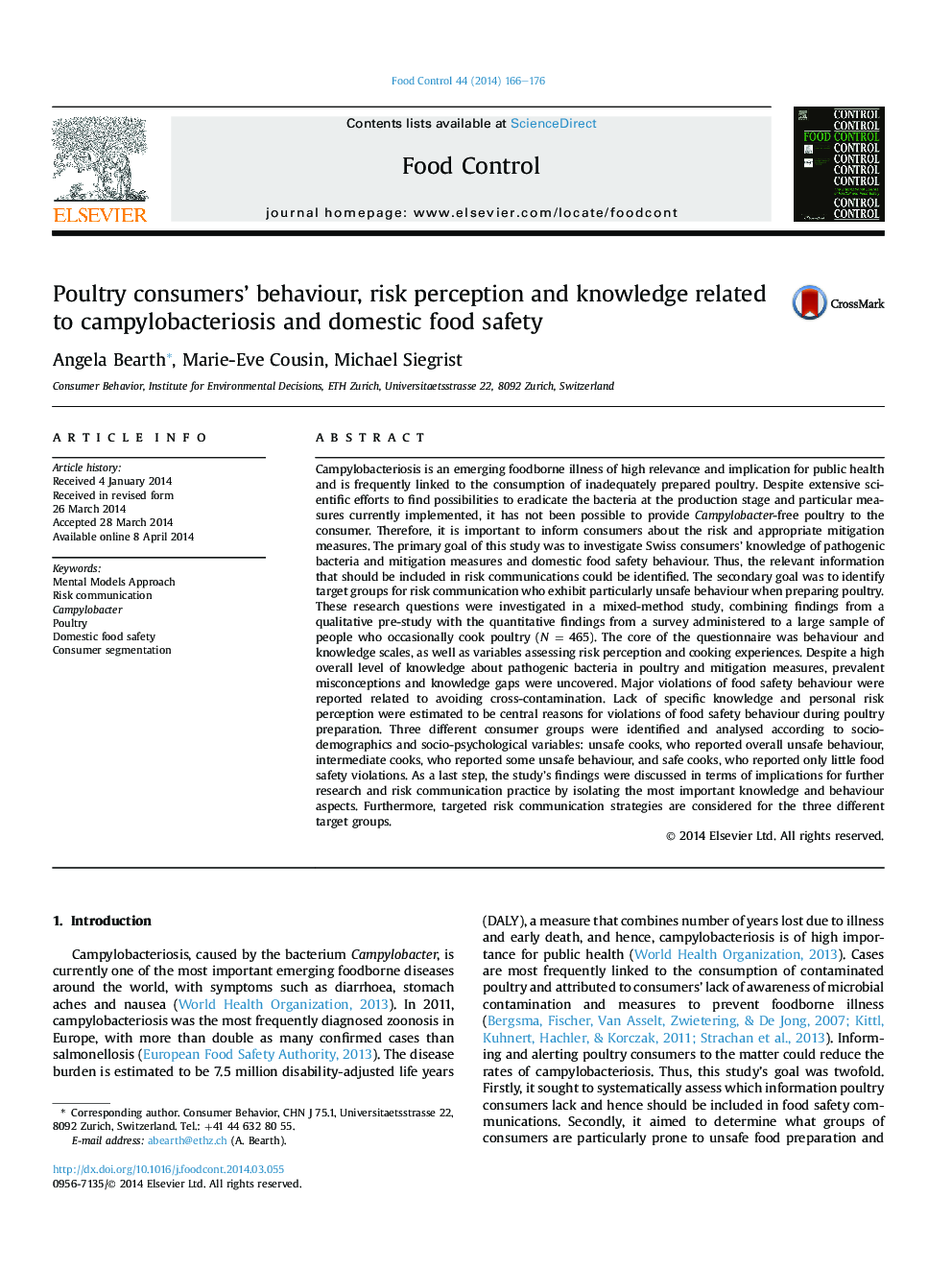| Article ID | Journal | Published Year | Pages | File Type |
|---|---|---|---|---|
| 4559350 | Food Control | 2014 | 11 Pages |
•Awareness of pathogenic bacteria and mitigation measures was high.•Misconceptions and violations of food safety were encountered.•The central misconception concerned the risk perception for poultry prepared at home.•Violations of food safety were primarily related to cross-contamination paths.•Three groups were differentiated according to behaviour during poultry preparation.
Campylobacteriosis is an emerging foodborne illness of high relevance and implication for public health and is frequently linked to the consumption of inadequately prepared poultry. Despite extensive scientific efforts to find possibilities to eradicate the bacteria at the production stage and particular measures currently implemented, it has not been possible to provide Campylobacter-free poultry to the consumer. Therefore, it is important to inform consumers about the risk and appropriate mitigation measures. The primary goal of this study was to investigate Swiss consumers' knowledge of pathogenic bacteria and mitigation measures and domestic food safety behaviour. Thus, the relevant information that should be included in risk communications could be identified. The secondary goal was to identify target groups for risk communication who exhibit particularly unsafe behaviour when preparing poultry. These research questions were investigated in a mixed-method study, combining findings from a qualitative pre-study with the quantitative findings from a survey administered to a large sample of people who occasionally cook poultry (N = 465). The core of the questionnaire was behaviour and knowledge scales, as well as variables assessing risk perception and cooking experiences. Despite a high overall level of knowledge about pathogenic bacteria in poultry and mitigation measures, prevalent misconceptions and knowledge gaps were uncovered. Major violations of food safety behaviour were reported related to avoiding cross-contamination. Lack of specific knowledge and personal risk perception were estimated to be central reasons for violations of food safety behaviour during poultry preparation. Three different consumer groups were identified and analysed according to socio-demographics and socio-psychological variables: unsafe cooks, who reported overall unsafe behaviour, intermediate cooks, who reported some unsafe behaviour, and safe cooks, who reported only little food safety violations. As a last step, the study's findings were discussed in terms of implications for further research and risk communication practice by isolating the most important knowledge and behaviour aspects. Furthermore, targeted risk communication strategies are considered for the three different target groups.
